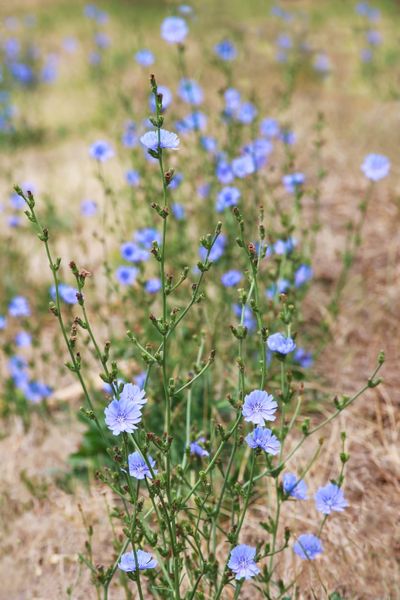What’s Wrong with My Chicory?
Chicory is a perennial herb native to the Mediterranean. It grows quite tall on stiff stems, producing green leaves and daisy-type flowers with sky-blue petals. Some gardeners grow chicory as ornamental plants, while others consider it a vegetable crop. The type of chicory you select depends on how you intend to use the plant. Chicory grows like a weed in Europe and has naturalized along road ways and open spaces in this country. It is tough and resilient and doesn’t require much care. However, gardeners sometimes notice chicory plant problems. Often, problems with chicory can be caused by improper planting or care, or your plants may have caught one of the common chicory diseases. When you notice chicory plant problems, the first thing to review is the care you are giving your plants. Chicory is a tough plant but it doesn’t compete well with weeds, so be sure to mulch the bed well with grass clippings or leaves. Use row covers to protect chicory from frosts. If frost hits an unprotected bed, your garden may appear to be full of sick chicory plants. Chicory also need several inches (10 cm.) of water each week, depending on the soil and will wilt if you forget to irrigate. But chicory is also subject to diseases and pests. It pays to be familiar with the most common diseases of chicory plants.
Common Chicory Diseases
Chicory plants are susceptible to a wide range of diseases, including fungal and bacterial chicory diseases. Some are treatable, others are not. One of the primary fungal diseases affecting chicory plants is anthracnose. This disease presents as dry spots on leaves developing into necrosis. Other fungal diseases of chicory include downy mildew, where leaves take on a papery texture with white, fuzzy mold underneath. Fusarium wilt (look for water-soaked lesions) and septoria blight (first presenting as chlorotic spots on mature plant leaves) are two other common fungal diseases of chicory. Both thrive in humid or wet conditions. If you see white thread-like fungal structures on your plants, they may have white mold. The primary worry gardeners have when it comes to bacterial diseases of chicory is bacterial soft rot. If your plants have this disease, you’ll see water-soaked lesions that grow into a rotted mass of ivory tissue which is liquid underneath. This and other bacterial chicory diseases emerge in warm, moist conditions. They usually enter the plant through wounds. Unfortunately, no chemical treatments aid with bacterial soft rot. Rotating crops and making sure your soil has excellent drainage can help.
